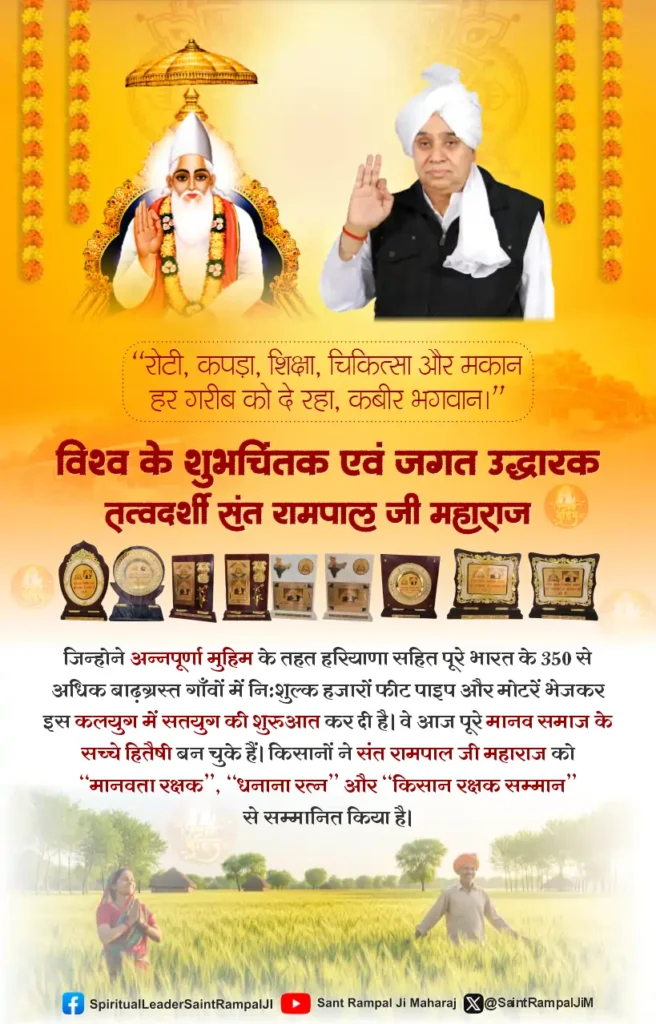Caste Census 2025: The Indian Cabinet has approved a caste-based demographic census to better analyze the country’s socio-economic structure and frame welfare policies for historically marginalized communities. However, critics argue it could weaken India’s unity and intensify caste divisions.
- India is set to conduct a caste-based demographic census Key points:
- What is a Demographic Census?
- India to Conduct Caste-Based Demographic Census
- How Will Caste Data Help the Government?
- Why Is There Conflict Over the Caste-Based Census?
- History of Demographic Census in India:
- Caste Composition in the 1931 Census
- Kabir Ji had opposed Caste System Openly and Tatvadarshi Sant Rampal Ji is on the same mission
- FAQs Related to the caste census in india News :
India is set to conduct a caste-based demographic census Key points:
- Caste information will be included in the upcoming demographic census.
- This marks the first caste-based census in Independent India.
- Experts support it for welfare planning; critics fear it may divide society along caste lines.
- This will be India’s first digital census, with data collection via a government portal and mobile app.
What is a Demographic Census?
Caste Census 2025: A demographic census is an official process through which governments gather data about their population. This information helps in policy formulation, resource distribution, employment planning, and welfare initiatives.
India to Conduct Caste-Based Demographic Census
After multiple delays, India will conduct its next census in 2025. For the first time since independence, caste data will be included, marking a historic return to the comprehensive enumeration last done in 1931.
How Will Caste Data Help the Government?
Experts argue that the absence of accurate caste data has hindered effective policy-making. Updated figures will help tailor welfare schemes, improve resource allocation, and address the real needs of backward and marginalized communities.
Read in Hindi: जातीय जनगणना और पहलगाम हमला: एक सामाजिक सुधार और सुरक्षा चिंता की गहरी पड़ताल
Why Is There Conflict Over the Caste-Based Census?
Caste Census 2025: Prime Minister Modi has criticized the caste-based census, suggesting it is an attempt to divide society. Meanwhile, supporters argue it will expose how, even after a decade of governance, the socio-economic conditions of backward classes remain unchanged.
History of Demographic Census in India:
First Census: 1871
Systematic Enumeration Began: 1881 under W.C. Plowden
Last Census: 2011
Next Census (Delayed from 2021): Expected in 2025, with caste data
Caste Composition in the 1931 Census
The 1931 census documented over 4,147 castes and sub-castes, including categories like OBCs, SCs, STs, and General. While the figures became controversial and were later dropped from official records, the 2025 census aims to update and legitimize these statistics.
Kabir Ji had opposed Caste System Openly and Tatvadarshi Sant Rampal Ji is on the same mission
Kabir Saheb Ji always condemned the oppressive caste system calling it a false division of the society. He once said :
“Brahman, Kshatriya, Vaishya, Shudra; yeh sab paap ki jaat, Ek Ram ko bhaj le, to sabki utare baat”
Caste Census 2025: Now this verse begs the question: who is that “Ek Ram” that is the son of Dasrath ? Well, probably not but He is a true god as mentioned in our holy scriptures and He is omnipotent , omniscient and is not bound to the birth and death but Ram Chandar Ji was born and died even.
And worshiping that one god is the only way to get salvation. Want to know more about that One God
Read : https://www.jagatgururampalji.org/en/articles/post/who-is-god-jagatguru
FAQs Related to the caste census in india News :
1. Which caste is considered superior in India?
A. Generally brahmins are considered at the top of the traditional caste hierarchy.
2. Which is considered the lowest caste in the SC category?
A. Communities like Mushahars are considered as lowest within the SC community.
3. Will this data create division or harmony?
A. While critics argue that it may divide people, supporters believe it will promote social justice by offering visibility to historically marginalized groups.
4. Which country is most populated ?
A. India is one of the most populated country in the world.
5. Which state launched the caste-based demographic census ?
A. Bihar conducted the first caste-based demographic census in 2023 and as per the stats around 36 % of the total population is from the highly backward class and around 27.13 % of the population comes under the backward category.









